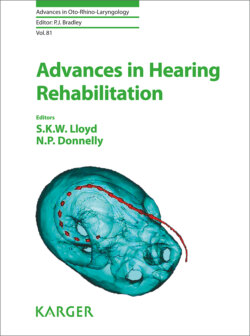Читать книгу Advances in Hearing Rehabilitation - Группа авторов - Страница 39
На сайте Литреса книга снята с продажи.
Surgical Handling
ОглавлениеThe ideal prostheses should be ergonomic, and easy to place and revise. This can mean different things to different surgeons, but the following are the author’s preferences. A perforated head is desirable, as it means that the stem is visible as the prosthesis is placed. A smaller, conformable head, that is, no larger than 4 mm diameter maximum is easier to conform to any remaining TM. A light prosthesis is easier to pick and place with a sucker; however, if it is too light, it is likely to stick to blood and saline and be difficult to manipulate. A prosthesis with a lower centre of gravity is more likely to stay stable after placement, and not tip intra-operatively, as is a prosthesis with a broader base on the stem. An off-center prosthesis is easier to place without hitting the posterior wall. An easily modifiable prosthesis means that the head angle be tilted to shape to TM variables, and there are a few prostheses that try to allow expansion or contraction of the prosthesis for exact fit (e.g., by placing an “S” bend in the shaft that can be opened or compressed). Most prostheses have some kind of sizing system, either with dummies or with measuring rods. While it is ideal, in terms of reducing inventory, to have just one prosthesis that can be configured to different sizes, in practice, this has to be balanced with how “fiddly” it is to modify and change the size of the prosthesis.
